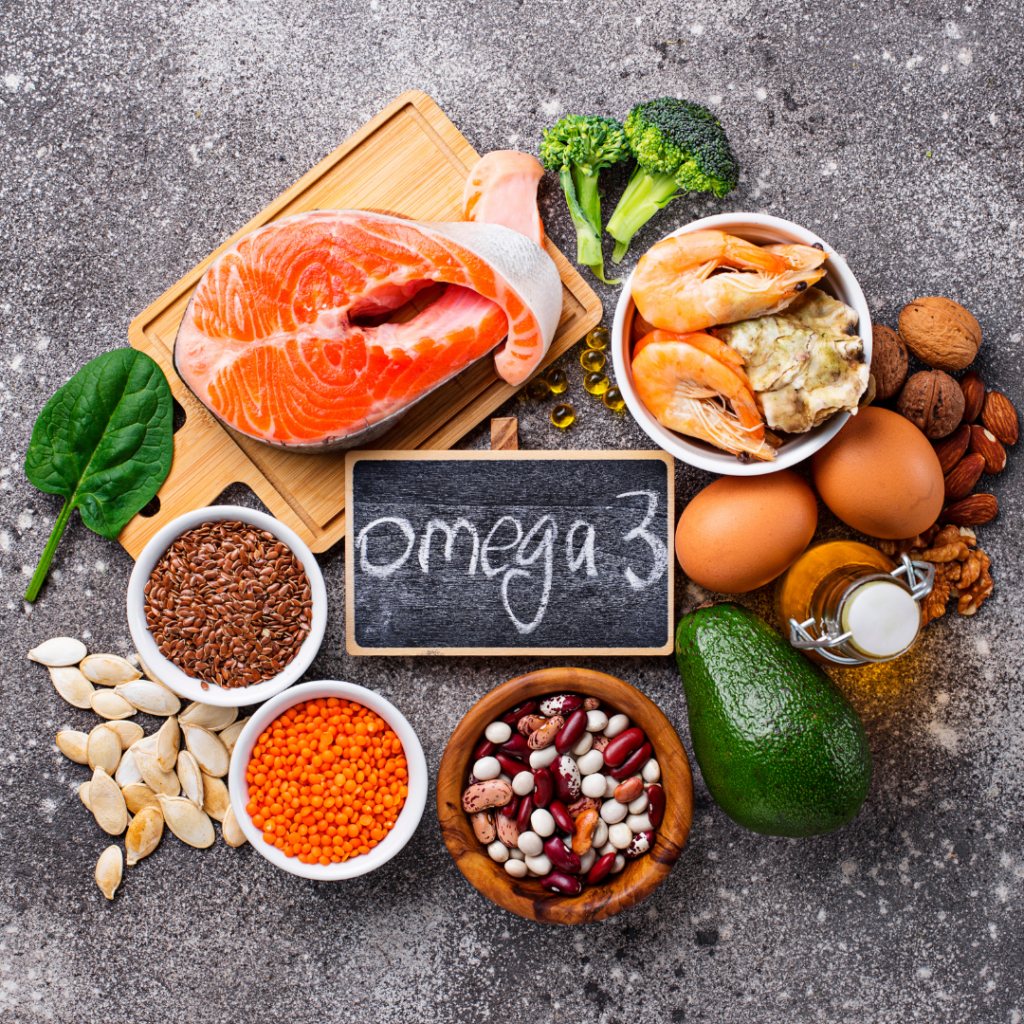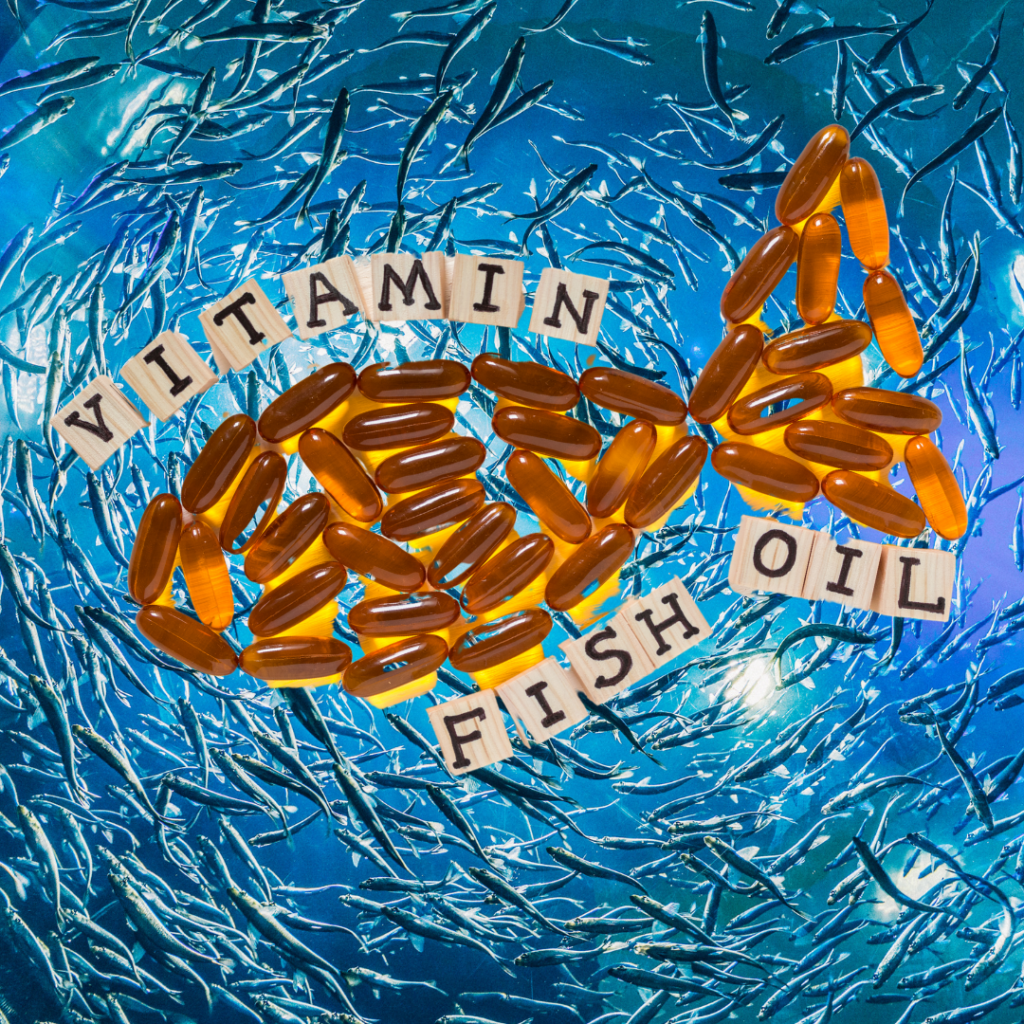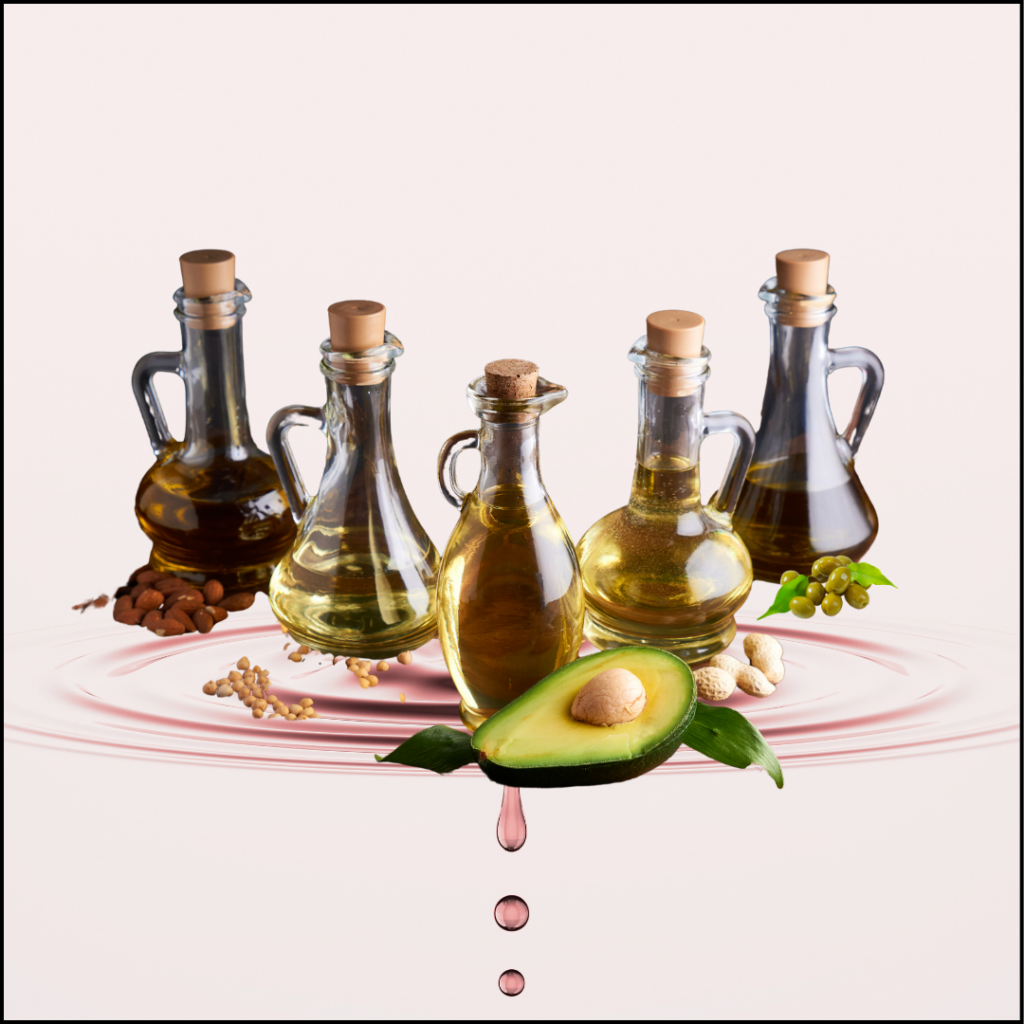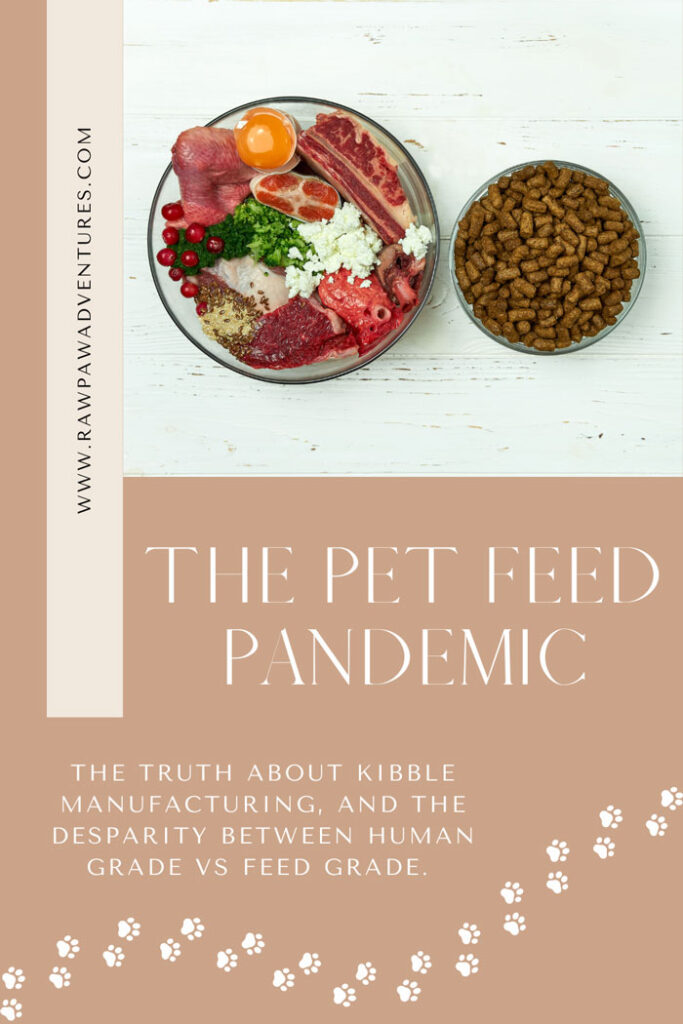
What are Omegas?
The best place to start this conversation is with an explanation and comparison of Omegas. Specifically, I’m talking about Polyunsaturated Fatty Acids, or PUFAs. These PUFAs can be broken down largely into Omega 3’s, Omega 6’s and Omega 9’s. However, because we’re able to synthesize Omega 9’s in the body, these don’t really hold a seat at the table when discussing dietary intake of PUFAs, so let’s focus on 3 & 6.
Omega 6
Omega 6 fatty acids that you might hear spoken about or written on labels are Linolenic acid (LA) and arachidonic acid (ARA). Many people speak about Omega 6’s like they’re only negative and pro-inflammatory, but the truth is that you truly do need them in the diet for healthy inflammatory processes.
What could I possibly mean, calling inflammation healthy?! Well, we NEED inflammation for several key bodily processes. For example, these fats are required for cellular growth and repair, reproduction, and creating pro inflammatory molecules such as prostaglandins. These allow for proper response to injury by sending inflammatory markers to the wound and beginning the process of blood clotting. You can see how too much of these can be an issue and could contribute to blood clots or chronic inflammation, but also how too little can cause a problem such as inability to stop bleeding from a new wound.
Omega 3
When it comes to Omega 3’s, the opposite connotation is usually found. These are our anti-inflammatory fats, the ones that everyone gives praise to and wants to supplement. These include Alpha Linolenic Acid (ALA), Eicosapentaenoic Acid (EPA) and Docosahexaenoic Acid (DHA). Geez, say those five times fast….
These are important for maintaining healthy skin elasticity, a shiny strong hair coat, retinal function, integrity of all your cell membranes, and fat-soluble vitamin absorption, storage and transportation. DHA in particular is great for brain health, and EPA has been shown to specifically improve heart health and prevent cancer growth.
What are the ratios?
When we’re considering dietary intake of fats, the ratio of how much we consume of each and how they relate to each other is important! The ideal ratio of Omega 6 to Omega 3 for people is about 5:1, and for dogs and cats it’s about 4:1. Unfortunately, very few people, cats or dogs are eating an optimal ratio of Omegas.
In the Standard American Diet, or the SAD diet as we so appropriately nicknamed it, many of us have ratios of upward of 20:1 or worse. And when it comes to our pets, the ‘governing body’ for nutritional recommendations suggests an outrageous 30:1 ratio. This is an astronomically inflammatory ratio, and shameful to be recommended by any institution that considers themselves an authority on nutritional advice.
This begs the question: how do we achieve optimal levels in the diet? It can be really difficult to reach, and of course it would be difficult to even know if we DID reach it because how do we track that kind of information? I generally advise not feeding off a spreadsheet. It makes life too clinical, and there’s no way to even be sure that the numbers you got when you plugged a bunch of ingredients into a diet formulator will actually match the nutrient profile of the slab of meat and handful of organic veggies you grabbed off the grocery store shelf anyways. Instead, we look at sourcing, variety and quality, and then we look to ourselves and how we feel as the measure of Omega presence in the body. Deficiency can show up as broken nails, dry skin, excessive shedding, dry skin and itching, while appropriate levels would look the opposite.
Where do you find Omegas?
Food! So many foods are full of good fats. This, of course, means that many foods are also full of bad fats, and we’ll get to that shortly. First, let’s focus on sourcing of your Omega 3’s & 6’s and ways to add them into the diet.
Omega 3’s

When we look for Omega 3’s, the top source is going to be fish, and this is where you’ll find your EPA & DHA most abundantly. There are also non-fish marine sources such as phytoplankton, however that can be a little more difficult (and expensive) to find. There are a few considerations I like to keep in mind when it comes to fish:
- Size: The larger the fish, the higher the risk! This is true in terms of heavy metal toxicity as well as overall pollution and consumption of microplastics because as fish live longer and grow larger, they consume and are contaminated by these toxins. Unfortunately, our oceans are very polluted now and the runoff from pesticide laden farms into large rivers that empty info the gulfs and coasts can make finding fish without contamination nearly impossible. This is why small, cold-water fish are the best choice.
- Species: Sardines are my favorite, as they have an excellent Omega 3 and Vitamin D profile. They’re plentiful and pretty affordable as well. Anchovy, Smelt, Capelin and other similar small fish are also really high in Omega 3s, and their small size decreases their risk of heavy metals and other toxins. Unfortunately, they don’t provide dietary Vitamin D, but they’re still good options. Next we have Mackerel, Herring and Salmon. All three of these provide both Omega 3s and Vitamin D, but Salmon is significantly larger than the other two, so in terms of size, this is the one I would feed the least. Rotation and variety are important, so I do rotate these species when I can.
- Sourcing: Where the fish is found matters. Farm raised fish live in horrible, filthy conditions. They swim in small tanks that are polluted with their own feces and are often overcrowded. Not only is it inhumane to allow any creature to live in these conditions, it also directly affects the nutrient profiles of these fish, and that ultimately transfers onto you. Farm raised salmon has next to no Vitamin D compared to wild caught and the other vitamins and minerals are affected as well. Just compare the color- farm raised salmon is a light pink/tan and often has artificial color injected into the flesh, compared to a wild caught salmon with a deep, vibrant orange/red color. You can literally see the difference.
- Sustainability: Overfishing is currently a problem, and it continues to worsen in certain populations. Cod, Salmon and Tuna are prime examples of species that are being overfished which can decimate populations. There are also the ethical considerations of certain species. For example, Krill are some of the smallest fish and thus least likely to be contaminated with heavy metals and toxins. However this is also the species that whales depend upon for the majority of their food, so many argue that making an impact on the krill population for human or pet consumption could have detrimental effects to the whale population in return.
- Stability & Storage: What I mean by this is shelf-stability. If you decide to include fish in daily meals, or even a few times a week, you have to decide what form you want those fish to take. I’m a fan of whole foods, so I buy a large frozen 50lb bulk box of sardines and use them in my meal prep over the course of 3 months. I have a big chest freezer, so this is possible for me. On the other hand, sardines can be purchased canned in water and kept in a kitchen cabinet. Another option is fish oils. I am not a huge fan of fish oils, because they’re expensive, they’re processed, and they can become rancid (spoiled) quickly. However, some people can only use an oil, and when that’s the case, you just have to do your best to get the highest quality possible. Go for the smallest glass bottle that is darkly tinted and store it in the fridge. Never use pumps as this exposes the oil to oxygen constantly, and look for a company that does third party testing for heavy metals and other toxins. Make sure they list the amount of EPA and DHA on the label, and go for the same species I’ve discussed above. Another option are gel capsules, which can be fed whole or punctured and squeezed out over the meal at feeding time.
The other form of Omega 3 we might feed is ALA. ALA is abundant in nuts and seeds, which are usually bursting with other trace minerals and phytonutrients as well as fiber. While ALA is beneficial, dogs and cats have limited ability to convert it into EPA and DHA for use in the body, only about 10%. So it’s important to not rely on only ALA in the hope that your furry family member will be able to convert enough to meet their needs- it’s very unlikely.
- Seeds: hemp hearts, freshly ground flax seeds, soaked chia seeds and freshly ground pumpkin seeds, or pepitas, are my favorite seeds to use. Flax in particular has amazing benefits for the gut microbiome and act as fiber to regulate bowel movements and keep those gut bugs happy. A word of caution here- even seeds can become oxidized when exposed to oxygen and turn rancid quickly. This is why I like to buy whole flax and grind it at the time of feeding. I also store my seeds in glass jars away from sunlight, and only buy organic. A little bit goes a long way, and my 65lb dogs get about 1tsp in a meal at most. I love topping my salads, yogurt or kefir with hemp hearts- they add a delicious nutty flavor with a slight crunch!
- Nuts: almonds, hazelnuts, pine nuts, Brazil nuts, pistachios, walnuts and more can provide trace vitamins and minerals to our cats and dogs. Almonds in particular are a great source of Vitamin E, and Brazil nuts have the highest concentration of Selenium of any food ingredient out there. This is of course in addition to the Omega 3’s they can provide. Be sure to avoid macadamia nuts, as these are toxic to our pets.
Omega 6’s
For the most part, you’re going to find more omega 6’s in your meats and cheeses. Depending on how an animal was raised, their Omega 6 profile may be higher or lower. Pasture raised chicken, for example, are much lower in Omega 6 than caged chicken. The same can be said for any pastured animal, and for grass fed cows vs feed lot cows. Essentially all animals should be allowed to roam and eat their species appropriate diet so that they don’t have an inflammatory profile that is then passed onto us when we consume them. These are the best choices to intake dietary Omega 6’s, however not everyone can afford pastured or grass-fed animals. We do the best we can, and limit things like hot dogs and bacon, and opt for the pork loin and lean ground beef instead. Other good options include eggs, avocados, and the nuts mentioned above which also have healthy levels of Omega 6’s.
Don’t confuse Omega 6 fatty acids, which are Polyunsaturated Fatty Acids if you remember from above, with saturated fats or trans fats. These are not the same thing and require their own article and discussion. The only thing I’ll mention here is that saturated fats are not the demons that the modern health system made them to be, and thankfully people are finally speaking up about how the suppression of saturated fats has led to some striking health correlations, and not for the better.
The other most prevalent source of Omega 6’s in our diets are a category that is finally being called out for the detrimental health effects they’ve been connected to: Seed Oils.

Unfortunately, the rampant use of Seed Oils have packed a powerful punch to our society. Before Canola Oil was repurposed after WWII where it was being used as machine oil, and was modified, processed, mixed and deodorized into a ‘food-grade oil’ that was launched as one of the most successful and shameless marketing campaigns ever in the 1940s, we had negligent rates of heart disease, obesity, diabetes, autoimmune disease and metabolic syndrome in America. Once Canola Oil, followed by Corn Oil, Soybean Oil, Canola Oil, Cottonseed Oil, Rapeseed Oil, Grapeseed Oil, Sunflower Oil, Safflower Oil, Rice Bran Oil, Sesame Oil and Peanut Oil were mass marketed, this began to change. Rapid rise in the rates of these conditions seem to directly correlate with the use of these oils, but why would that be? There are a few reasons.
- These oils are highly concentrated. Eating 3-5 tablespoons of corn oil per day is equivalent to eating 70 ears of corn in a day! Cooking in 3-5 tablespoons of soybean oil is the same as eating about 2lbs of soybeans. That is an excessive, non-physiologic amount of a substance that our bodies are just not engineered to handle. These extremely concentrated oils are insanely high in Omega 6s, far more than what one would find in a simple ear of corn eaten alongside their grilled steak.
- All of these oils are highly processed, contaminated, and rancid. The simple act of processing them already makes them rancid, but then they’re packaged in large family sized containers, often plastic ones, and left to sit on our counters in direct sunlight next to the hot stove and often with a spout for easy use during cooking. All these factors make them more rancid and spoiled so they’re even more inflammatory as we consume them.
Now, these Seed Oils are NOT the same as whole fresh seeds. Remember, the issue with Seed Oils is that they’re highly processed and extremely concentrated. So don’t be afraid of a healthy seed, but I strongly recommend avoiding Seed Oils. Unfortunately, these oils are pretty much everywhere for people- you can’t get a fried food item at a restaurant without it having touched a Seed Oil. They’re also hidden in salad dressings, some breads, many shelf stable products like crackers, nut milks and so much more. For our pets, it can be found in some kibble brands and even some companies making human grade foods. So keep an eye out and be mindful. I encourage you to listen to my recent Raw Remedies podcast episode I recorded with Jessica Fisher of The Pet Parenting Reset all about oils- we have an excellent discussion about this and go into great detail.
The seed and vegetable oils that I personally feel very comfortable using are Avocado Oil and Coconut Oil. My favorite brand of Coconut Oil is from CocoTherapy, and their website is www.cocotherapy.com. Extra virgin olive oil (EVOO) is also ok but be sure to research any brand you find as many are adulterated or contaminated here in America.
I strongly encourage you to watch the documentary Fed A Lie, linked if you click the name, and found on YouTube. It’s all about the rise of seed oils and subsequent rise in chronic health conditions. You’ll feel like your heard is exploding by the time you finish, but we need to know better in order to do better, and this is a very informative and no-holds-barred documentary that makes a great first step. Another source you can consider is the book The Big Fat Surprise- Why Butter, Meat and Cheese Belong in a Healthy Diet, by Nina Teichoz. The link will take you to Amazon, but I’m sure you can find it elsewhere if desired.
In Summary…
I know I threw a lot at you here, and the topic of Omegas and oils can be controversial and confusing. My best tips for choosing foods and getting a healthy balance of omegas are these:
- Look for grass-fed, pasture-raised and organic meat and eggs whenever possible, as well as wild-caught small fatty fish in fresh form or canned in water.
- If you have to use a fish oil, opt for the smallest, darkest glass bottle without a pump and that has been third party tested for metals. Make sure they list their EPA/DHA content as well.
- Seeds and nuts are healthy, but seed oils are extremely inflammatory and should be avoided if at all possible. Keep an eye out for these oils hidden in foods you wouldn’t expect!
- Avocado oil, Coconut oil and some EVOO are pretty safe for cooking, and the same thing applies in terms of smallest, darkest bottles stored away from the sun and not exposed to air with a spout.
- Head over to YouTube to watch the Fed A Lie documentary- you won’t regret being more informed and thus more capable of making healthy choices armed with that knowledge.



What do you think of Hemp seed oil? In particular Raw and Cold Pressed?